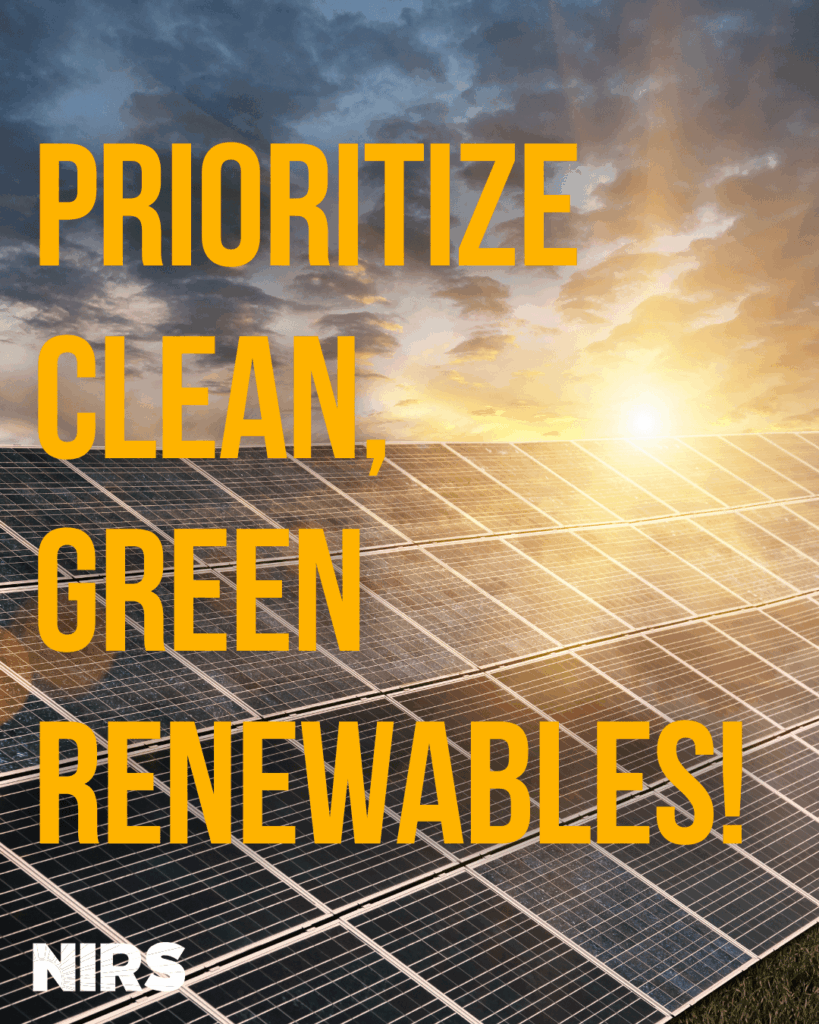
In case you haven’t noticed, the nuclear industry’s political grip has reached truly absurd levels. Both parties have basically rolled out the red carpet for nuclear power, treating it like the climate panacea we never asked for. Governor Hochul’s recent push for new reactors in New York is alarming—but not exactly shocking. She’s just following a well-worn path of Democratic governors and state leaders caving to industry pressure.
Bipartisan Sellout to the Nuclear Lobby
Hochul isn’t alone. Democratic governors who once championed renewable energy have conveniently forgotten about it after the nuclear lobby showed up with cash and talking points:
- Governor Whitmer in Michigan? Following the pro-nuclear breadcrumbs left by Biden’s Energy Secretary (and former Michigan Governor) Jennifer Granholm.
- Gavin Newsom in California? He went from helping phase out Diablo Canyon in 2016 to making Californians pay billions to keep it open—because apparently reversing progress is now considered leadership.
- Governors in Connecticut, Massachusetts, Colorado, and Maryland? All jumping on the nuclear bandwagon.
This nuclear love affair really kicked off in 2016, when Governor Cuomo in New York became the first state leader to push through a nuclear bailout to prevent old, uneconomical reactors from being retired—essentially giving the industry a lifeline when it was circling the drain. Illinois, Connecticut, New Jersey, and Ohio quickly followed suit, handing out billions in subsidies like they were party favors.
The sea-change in political favoritism toward nuclear energy is inseparable from the wave of corruption which drove it. In Illinois and Ohio, federal prosecutions have brought down the Speakers of the House in both states’ legislatures, as well as corporate executives, lobbyists, and other state officials. In Ohio, two of the accused took their own lives before going to trial. In a sort of preemptive tell-all, New York Governor Cuomo admitted to negotiating the $7.6 billion bailout behind closed doors with corporate executives for months, while his Public Service Commission conducted a sham policymaking process
Dark Money and Political Theater
Of course, these bailouts were unpopular, but that didn’t stop the nuclear lobby. Their PR and lobbying machines flooded statehouses and Congress with dark money and pro-nuclear propaganda. Suddenly, nuclear was being sold as “clean” and “necessary” for both climate and national security. (Because what’s more secure than having radioactive waste sitting around for the next million years?)
The nuclear industry has played the political game—creating the illusion of a bipartisan consensus. But here’s the catch: it’s all smoke and mirrors. The support is miles wide but paper-thin.
- Despite all the hype around the Vogtle 3 and 4 reactors in Georgia, no one has actually ordered an AP1000 reactor.
- The first major small modular reactor (SMR) project—NuScale’s proposed Idaho plant—was canceled before construction even started because the costs were astronomical.
- The only SMR design that even sort of has approval is from NuScale—and the company has already given up on it. The company is still seeking approval of the upgraded design the canceled Idaho project was based on.
SMRs Are a Dumpster Fire
The nuclear industry is so desperate that there’s now an internal fight over strategy. One camp wants to double down on SMRs—despite all evidence that they’re too expensive and unworkable. Another camp wants to standardize one reactor design (namely, the AP1000) and build it everywhere, as if copying the same flawed design over and over will magically make it work.
And what’s Big Tech doing? Basically nothing. Despite all the chatter about AI and energy demand, tech companies have invested almost zero real money into nuclear. Amazon made a big show of raising $500 million for X-energy, but that’s a fraction of the investmentsX-energy lost when its public stock offering was canceled. So, not exactly the vote of Wall Street confidence that Amazon’s largesse has been billed as.
Utilities Are Playing Both Sides
Here’s the real kicker: Governor Hochul isn’t doing this for the climate. The state’s utilities are actively resisting renewable energy expansion. If they actually cared about reducing emissions, they’d be pushing for grid modernization and renewable infrastructure. Instead, the governor is using nuclear to stall real progress.
And now the ZEC (Zero Emissions Credit) subsidy is set at $14.70/MWh—basically the same as the federal subsidy under the Inflation Reduction Act. Hochul’s office is spinning this as a win, saying Constellation will use federal taxpayer dollars to reimburse New Yorkers for the bailout. But let’s be real: they’re not ending the bailout. The federal subsidies expire in 2032, so Constellation is already laying the groundwork to extend state-level subsidies indefinitely.
Renewables Are Ready—Nuclear Is Not
Despite all the hype, the facts haven’t changed:
✅ SMRs aren’t working—too expensive, too complicated.
✅ AP1000 reactors are hugely expensive and face massive supply chain issues.
✅ Wind and solar are cheaper, faster to deploy, and more reliable.
✅ The only thing keeping nuclear afloat is political pressure and utility lobbying.
This isn’t about climate. It’s about protecting utility profits and keeping the energy system centralized and controlled. The nuclear industry is running out of time, which is why they’re going all in now—because if renewable energy scales up any faster, the case for nuclear will be dead in the water.
It’s Time to Fight Back
Look, the nuclear lobby’s grip on politics is real—but it’s fragile. No one is actually excited about building new nuclear plants. Politicians would celebrate nuclear construction jobs if they just rained down from heaven, but no one wants to foot the bill. The utilities are touting the “value” of nuclear because they know it delays the inevitable transition to renewables.
The facts are on our side. Nuclear is expensive, slow, dirty, and dangerous. Wind, solar, and storage are ready to meet our energy needs now. But the political theater surrounding nuclear is standing in the way.
We need to cut through the noise, continue exposing the industry’s failures, and demand a real transition to clean energy. Gov. Hochul may have swallowed the nuclear bait—but we don’t have to.



